Ready for a fresh take on Norway’s vibrant capital? Oslo’s charm goes far beyond the famous opera roof and fortress walls you have already heard about. Between fjord sparkle and forested hills hides a treasure chest of spots that locals adore and visitors often miss.
In the next few minutes you will stroll a pedestrian boulevard where buskers serenade parliament, scout medieval ruins, swim in seawater right downtown, and even toast the sunset beside a lighthouse in the fjord. Sounds tempting? Keep reading, because this ultimate guide lines up 15 irresistible landmarks in Oslo that should be on your next bucket list!
Key Takeaways
Oslo blends rich history, stunning natural beauty, and modern design in a compact cityscape.
Top landmarks include historic sites like Oslo Cathedral and Hovedøya Monastery, as well as contemporary gems like the Barcode District and Deichman Library.
Outdoor highlights feature the Sørenga Sea Pool, St. Hanshaugen Park, and scenic lighthouse excursions.
The city offers diverse experiences, from cultural institutions and medieval ruins to vibrant neighborhoods and fjord views.
Explore Oslo efficiently with expert local guides through Amitylux’s private tours, tailored for immersive and personalized visits.
Top Oslo Landmarks
1. National Theatre
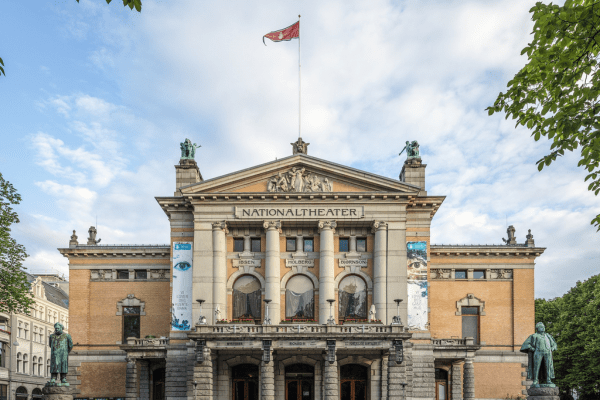
Location: Johanne Dybwads plass 1, 0161 Oslo
Opened in 1899 and designed by Henrik Bull, the National Theatre sits elegantly between the Royal Palace and Parliament. Bronze statues of the nobel prize winners Henrik Ibsen and Bjørnstjerne Bjørnson guard the main entrance, hinting at the literary legacy within.
Visitors can browse through more than 30 programs throughout the year, with an option to join a guided tour in English. Trains and trams stop at Nationaltheatret Station, making this one of the easiest landmarks in Oslo to add on your itinerary.
2. Storting Building

Location: Karl Johans gate 22, 0154 Oslo
The Storting Building, the parliament of Norway, sits in the middle of the famous Karl Johans gate. Its doors were opened in 1866, when the Norwegian government decided to build a new establishment for a permanent parliament building.
Swedish architect Emil Victor Langlet blended Renaissance curves with Norwegian brick, creating a chamber still used for heated debates today. Early birds can join free guided sessions during summer and peek at the hall shaped like a horseshoe, where the Norwegian laws are declared.
3. Oslo Cathedral

Location: Karl Johans gate 11, 0154 Oslo
The Oslo Cathedral is located at Stortorvet Square as the city’s main church. It was built in brick between 1694 and 1697, and has been used as public event spaces for both the Norwegian royal family and the government.
Visitors can step inside for richly painted ceilings and a gleaming Baroque pulpit, or walk along the curved bazaar arcade shelters bakeries and craft stalls. The city takes a pause at the bells that ring hourly, adding a gentle soundtrack to the bustling downtown life.
4. Oslo City Hall

Location: Rådhusplassen 1, 0037 Oslo
Twin towers of the Oslo City Hall in deep red brick are another landmark you cannot miss. Finished in 1950, the hall hosts the Nobel Peace Prize ceremony every December.
It was inaugurated in 1950, and the building is decorated with art that represents Norway’s history, culture and working life. Marvel at the vast murals depicting Viking myth and modern industry, then step out to the carillon ringing across the fjord every hour.
5. The Barcode District
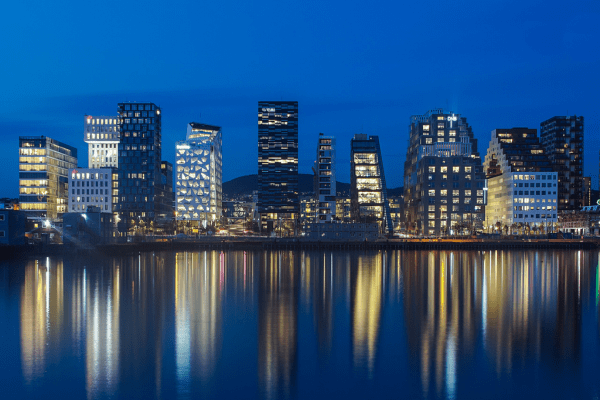
Location: Dronning Eufemias Gate 16, 0191 Oslo
Bjørvika’s daring high rises were completed in 2016, and together they form a silhouette that resembles a barcode. Hence, these developments are named the Barcode Project, and were planned as a redevelopment of the former industrial dockland in central Oslo.
The buildings’ transparent glass windows frame fjord glimpses, while evening lights pulse like a giant art piece. Snap photos from the elevated pedestrian bridge or wander Dronning Eufemias Gate to admire contemporary Scandinavian design.
6. Deichman Bjørvika Library

Location: Anne-Cath, Vestlys plass 1, 0152 Oslo
Deichman Bjørvika Library opened in 2020 in the heart of the Bjørvika district as the main library of Oslo. Sunlights cut through six massive floors holding 450,000 books, VR studios, podcast booths, and even a family cinema.
If you are heading over for a peaceful read, we recommend grabbing a window seat facing the fjord and watching ferries glide by while you read. Walk up to the top floor to enjoy the view while exploring the Future Library where 100 recently written books will be stored for 100 years!
7. Sørenga Sea Pool & Promenade

Location: Sørengkaia 69, 0194 Oslo
Sørenga Sea Pool is located only ten minutes on foot from the Opera House and brings you to a sleek harbor boardwalk crowned by a 50m seawater pool.
Opened in 2015, their sun decks, ladders, and a diving tower has been attracting swimmers all year round, even in the coldest month of winter! After a swim, you can enjoy the cafés on the promenade that serve Oslo’s favorite shrimp sandwiches during summer, or relax in the sauna to warm up after a cold plunge.
8. SALT Art & Music Village
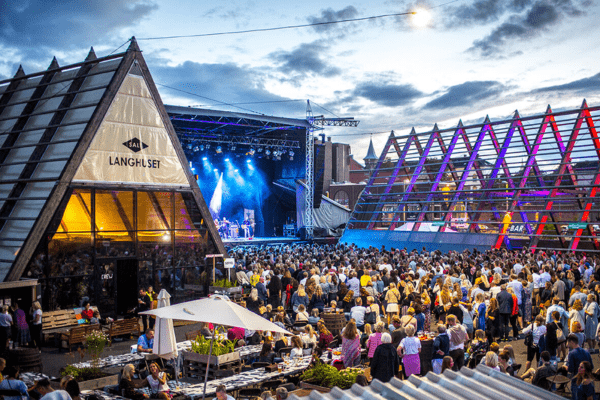
Location: Langkaia 1, 0150 Oslo
Across the water, a cluster of angular wooden “fish racks” hosts saunas, concerts, and street food stalls. At SALT Art & Music Village, you can grab a craft cider, listen to Arctic electronica, then sweat in a glass sauna before a bracing dip right off the pier. Weekend evenings feel like an open air festival under twinkling fairy lights.
9. Dyna Lighthouse
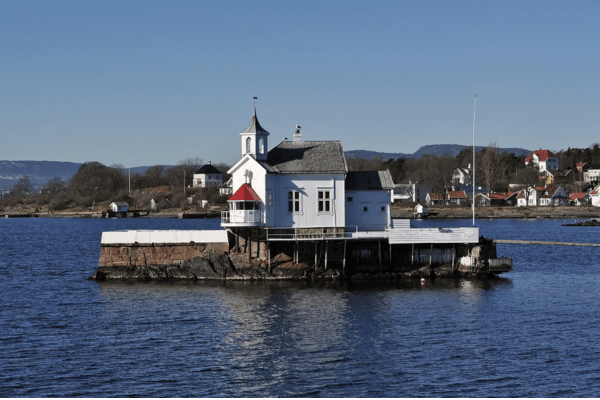
Location: Indre Oslofjord, 0110 Oslo
Dyna Lighthouse is a special landmark in Oslo as it sits on a tiny reef south of Bygdøy, and has guided ships since 1875. You can visit the lighthouse with a private boat that brings you to its cosy dining room for seafood suppers for just 30 guests. Make sure to time the return sail to catch Oslo’s skyline shimmering after dusk.
10. Hovedøya Kloster
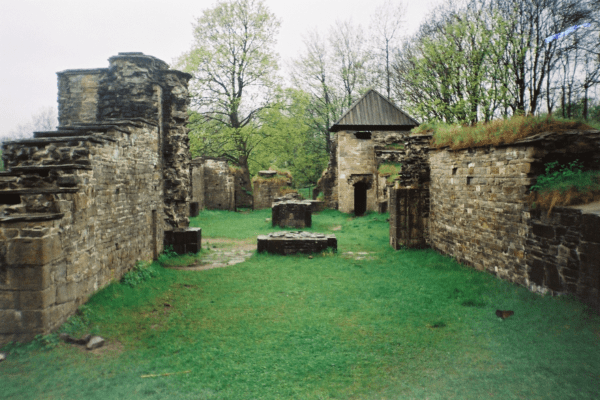
Location: Hovedøya, 0150 Oslo
Just fifteen minutes by ferry from Oslo, Hovedøya shelters Norway’s best preserved Cistercian ruins called Hovedøya Kloster from 1147. The monastery was founded by English monks led by Abbot Philippus, who found a small church to extend as a monastery on the island.
Although the monastery was burned down in 1532, visitors can still explore the ruins of the historical grounds.
11. Oscarshall Palace
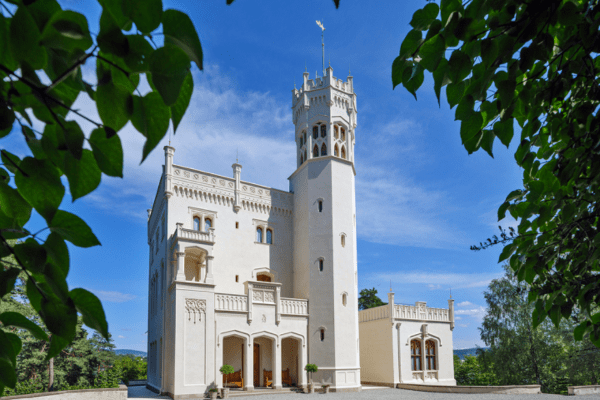
Location: Oscarshallveien 15, 0287 Oslo, Norway
Oscarshall Palace was commissioned by King Oscar I and finished in 1852 on the peninsula of Bygdøy. Visitors can participate in guided tours that reveal ornate dining halls painted by romantic Norwegian artists. The surrounding park offers dreamlike views toward the city and islands, which makes it a perfect landmark to visit in Oslo.
12. Gamlebyen Ruin Park & St. Hallvard Cathedral
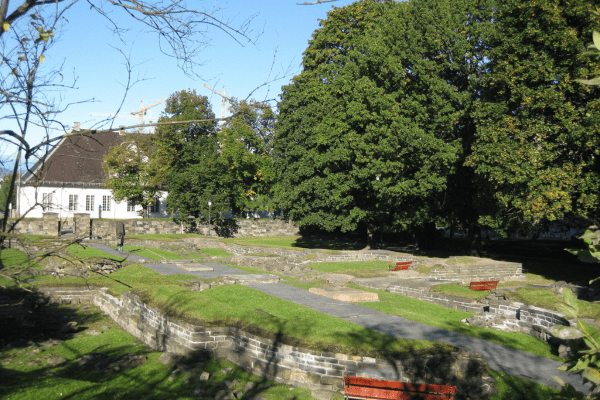
Location: Ruinparken, St. Halvards gate, 0192 Oslo
Gamlebyen Ruin Park preserves the historical heart of medieval Oslo. At its center lie the ruins of St. Hallvard Cathedral, originally built in the early 1100s and dedicated to Oslo’s patron saint, Saint Hallvard.
The cathedral served as a significant religious hub until it was severely damaged by fire and eventually fell into decay. Today, visitors can stroll along its paths to explore the tranquil park dotted with ancient stone arches and foundations.
13. Sognsvann Lake Circuit

Location: Sognsvann, 0863 Oslo
Sognsvann Lake is a recreational landmark in Oslo, conveniently accessible by metro. Located at the gateway to Nordmarka forest, this idyllic lake area offers a 4km gravel path perfect for leisurely walks, jogging, or cycling.
Visitors frequently enjoy swimming in the clean waters during warm months or setting up picnics along grassy shores. In winter, the pathway becomes a popular spot for cross-country skiing under soft lantern lighting.
14. St. Margaret’s Church Ruins
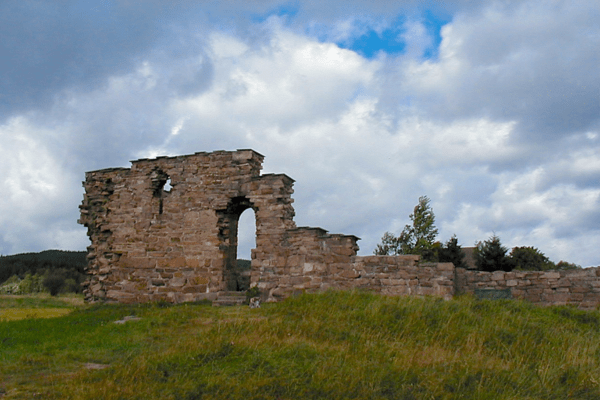
Location: Maridalen, 0890 Oslo
St. Margaret’s Church dates back to approximately 1250. Situated in the picturesque valley of Maridalen, these striking ruins once belonged to a significant medieval church dedicated to Saint Margaret. After the church fell into disuse following the reformation, the building gradually deteriorated, leaving behind atmospheric ruins set against serene countryside scenery.
Today, visitors can explore the evocative remains of stone walls while enjoying panoramic views of Maridalsvannet, Oslo’s primary freshwater reservoir. The peaceful setting invites visitors for leisurely picnics, bird watching, or simply absorbing Oslo’s medieval history amidst quiet natural surroundings.
15. St. Hanshaugen Park

Location: St. Hanshaugen, 0171 Oslo
St. Hanshaugen Park is a charming hilltop park originally developed in the mid-1800s. Named after traditional midsummer celebrations (St. Hans), the park was gradually expanded and beautified with scenic pathways, lush gardens, and recreational spaces. A historic water reservoir tower, completed in the 1870s, sits on the top of the hill, which is now an iconic symbol of the neighborhood.
Visitors can enjoy leisurely walks along winding paths, and relax by the park’s tranquil pond. They can also admire panoramic views of Oslo and its surrounding fjords from numerous vantage points. The delightful blend of history, nature, and impressive vistas makes St. Hanshaugen Park one of the most inviting landmarks in Oslo.
Conclusion
These 20 landmarks in Oslo trace the city’s full story: medieval monastery stones on Hovedøya, classic architecture at the Storting, daring Barcode towers, and an island lighthouse in the fjord. Together they show how Norway’s capital blends fjord, forest, and contemporary design within a compact radius for the curious walkers.
If you would like to enjoy these landmarks in Oslo with a local expert, consider joining Amitylux’s private Oslo tours. Our knowledgeable guides are ready to share their insights on how to discover hidden gems in the city by foot, bike, or even by private transportation with a driver!
Don’t forget to explore our guide to the best restaurants in Oslo to pair each sight with a memorable meal, or dive into a colourful overview of the coolest neighbourhoods in Oslo. We look forward to showing you various sides of the city!
Frequently Asked Questions
What is Oslo best known for?
Oslo blends vibrant modern architecture, scenic fjord access, and historical ruins with medieval roots, making it a city that has both natural landscapes and urban landmarks.
What are the top 3 most interesting landmarks in Oslo?
We recommend the Storting Building for a historical experience, Sognsvann Lake Circuit for a day in nature, and the Barcode skyline for night time views and modern design.
What is special to see in Oslo?
Beyond the famous sights, ferry trips to island ruins, swims in the Sørenga sea pool, and sunsets from St. Hanshaugen Park are a few special places to see in Oslo.




